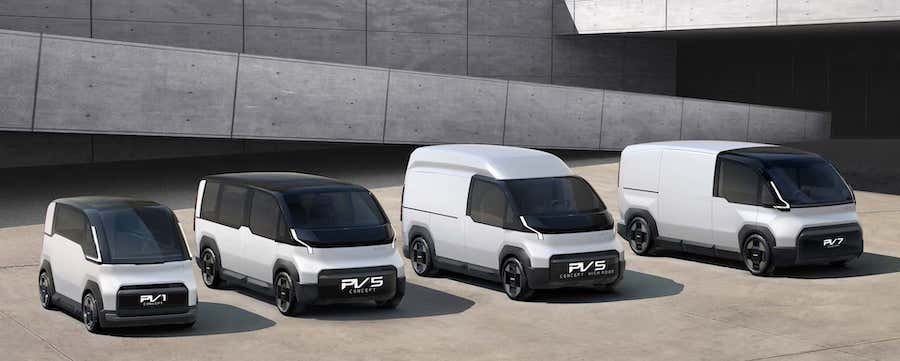Kia's Cute Concepts Use Magnets To Create The Chassis Cab Work Trucks Of The Future

Kia envisions a future where one vehicle platform will work hard as a cargo hauler, then swap space for seats as a taxi before changing yet again for a weekend vacation in the woods. It's called the PV5, and it's one of three modular concepts Kia is presenting at CES this year.
Technically, the automaker is rolling into Las Vegas with five concepts — three of them are PV5s. They all revolve around something called Platform Beyond Vehicle (PBV) solutions. Basically, it's an all-in-one idea that a basic vehicle platform can easily be reconfigured as needed to perform different functions, while advanced software helps owners and businesses keep track of everything. As you might guess, it's presented as a mobility solution largely for businesses. But nothing is saying you can't ditch the passenger compartment module for a cargo box and toss the mountain bikes in the back.
Here's how it works: Kia presents the PV5 as a single platform underneath with a standard cockpit at the front. Being an electric vehicle, the front clip is raked sharply like you'd find in a van, only there's no engine sitting between the driver and passenger seat. The magic happens behind the cockpit, where large body-sized modules can be installed depending on what you need to do. If it sounds like a chassis cab, you're not wrong. But unlike a chassis cab, an upfitter doesn't weld on a made-to-order body for the back. Instead, Kia offers "life modules" that attach through mechanical and electromagnetic means.
As such, a passenger life module can be installed, and then later swapped to a cargo module if something changes. Kia highlights five different versions of the PV5, including a basic cargo van, a different cargo van with low ground clearance, another cargo van with a high roof, a taxi, and if none of those sound appealing to a buyer, there's the good ol' chassis cab ready for a completely custom build the old fashioned way.
It all starts with the PV5 concept, but further down the road the PBV line will include a smaller PV1 and a larger PV7, also shown for the first time at CES. They're all electric, though Kia isn't keen on sharing any details regarding power or range at this point. They'll all make use of integrated software solutions that have the vehicles communicating with other vehicles, communicating with drivers, and possibly, communicating with your mom on why you didn't call her last Sunday.
We might be exaggerating on that last bit, but the point is this: Kia doesn't want to stop at building versatile work vehicles. It wants to connect them all with advanced software to help businesses run better.
"Kia PBVs will initiate a new era of seamless everyday business and lifestyle solutions," said Karim Habib, Kia's executive vice president and head of global design. "We hope to make our customers’ lives easier and better, whether they’re stationary or on the move, offering exceptional flexibility and customization through radical modularization."
When will this party get started? Kia describes PBV as a three-phase process and PV5 represents phase one. The automaker hopes to have a new manufacturing facility up and running in 2025 that can build 150,000 units a year. Beyond that, however, is anyone's guess.


